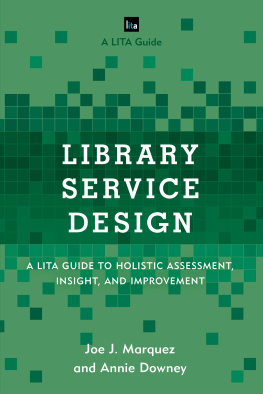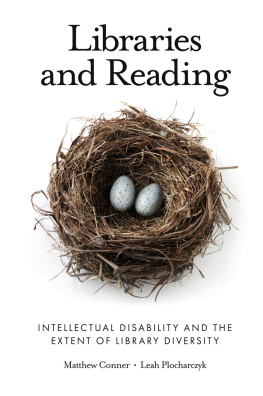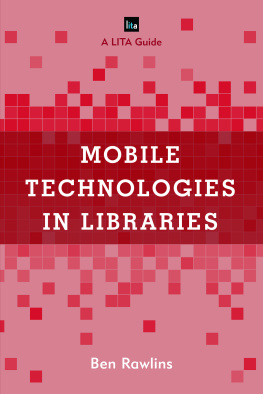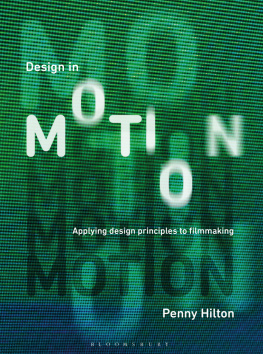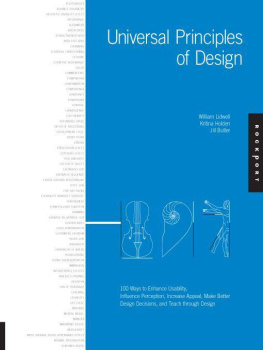Carli Spina is an associate professor and the head of research and instructional services at SUNYs Fashion Institute of Technology in New York City. She holds a JD from the University of Chicago Law School, an MLIS from Simmons GSLIS, and an MEd from the Harvard Graduate School of Education. She frequently writes, presents, and teaches on Universal Design, accessibility, and inclusion in libraries.
The goal of this book is to bring together years of reading, studying, and discussing Universal Design and the related framework of Universal Design for Learning as they are applied in a wide range of settings. I have been fortunate to be able to learn in formal settings from leaders in the field, such as Dr. David Rose, one of the originators of Universal Design for Learning, and to work closely with librarians who are deeply committed to inclusion and Universal Design in libraries.
This book is a product of all of this work, and I am grateful for everyone I have learned from and worked with throughout this process. While I could not begin to thank everyone on this list, I would like to take this opportunity to thank everyone who was willing to talk to me about their work applying Universal Design and Universal Design for Learning in libraries. Interviewing practitioners at a wide range of institutions as part of the process of writing this book, and particularly crafting the case studies, has given me even more certainty that Universal Design offers opportunities to improve inclusion in libraries and has left me even more impressed by the work done by my colleagues throughout the field of librarianship.
On September 24, 2019, Queens Public Library opened the first new branch in over a decade to great fanfare: the Hunters Point Community Library.
However, a mere ten days after the opening, the library was back in the news. A local publication, Gothamist, published an article highlighting the fact that the library has some serious accessibility issues.
The librarys spokesperson initially released this statement: The building complies with all building codes, including the ADA.... Our staff has been and will continue to retrieve books for customers, and we are going to offer devices that will allow customers to browse the materials available in those areas.
More troublingly, however, there is a question as to whether even the minimum legal requirements were met. A class action lawsuit was filed in federal court on November 26, 2019, stating that the library was designed and built with a total disregard for adults and children with mobility disabilities and in flagrant contempt of the legal requirements of the Americans with Disabilities Act. It may well take time for this suit to work its way through the legal system, but regardless of its outcome and even if the court determines that the building complies with legal requirements, it is clear that this was not enough to meet the communitys actual needs.
Moreover, these design decisions impacted a far wider segment of the community than individuals who cannot use stairs. In particular, anyone with a stroller or a young child is likely to find the childrens department far from welcoming as the single elevator and limited stroller parking space make it difficult to get to childrens programs. This problem is compounded by the fact that the stairs to the childrens space are currently closed because library officials, in a walk-through before the building opened... saw a potential liability for small children who could jump and fall on them. The controversy surrounding these aspects of the librarys design show that the architects overlooked the needs of some important subsets of the local population. Their design was aesthetically pleasing but was not able to meet the day-today needs of many different types of patrons. This makes it an exclusionary space rather than a welcoming and inclusive community hub.
Less than a month after news of the Hunters Point Community Librarys issues came to light online, an article was published about the Mui Ho Fine Arts Library at Cornell University. Combined with this unique floor are railings and cage-like elements at the end of each row of stacks. Taken together, the effect is one of openness, and the sight lines in the space are maximized in a way that adds to the drama of the space and displays the librarys holdings in an eye-catching manner.
The striking design impressed many. The University Librarian at Cornell University described the space by saying, The books and their shelving form a sculptural whole, a breathtaking tribute to the potential of the printed word and image to inspire learning, research, creativity and innovation. The design as a whole can also present real problems for those who may be uncomfortable with heights, since patrons can see all the way down from whatever floor they are on, both through the floor and from the railings at the end of each row. In fact, given the railing at the end of the rows, this could greatly diminish these patrons ability to access books in the space even if the floors could be somehow covered.
Overall, the buildings elaborate design may look impressive, but at the same time it makes the space difficult and uncomfortable for many different users. As Sarah Rose Sharp noted in an opinion piece about the librarys design, One might almost think that the five-year design process of the library involved male architects thinking harder about how to make the space accommodating to books and air rather than females and disabled bodies. suggesting that over time the school may plan to try to address at least some of these concerns. Ultimately, the design has generated controversy that has arisen just as the school is hoping to celebrate this new space and the commitment it demonstrates to the librarys collections and services.
In addition to being an embarrassment for these high-profile public projects, these problems are emblematic of issues that are still seen at many libraries. Those issues relate to the difference between technical accessibility and true inclusion. Despite being two vastly different libraries, serving very different populations, both of these libraries faced similar criticismsnamely, that they failed to consider the needs of significant portions of their patron populations in making expensive and difficult-to-change design decisions. Through these decisions, they have sent the message that their spaces are only intended for some smaller subset of their community. No matter how unintentional this message may be, it is hard for patrons not to sense the exclusion when they find that certain spaces exclude those using specific tools or wearing certain types of clothing.
In these cases, the critical decisions centered on architecture and structure, but decisions relating to accessibility and inclusivity occur in all aspects of library design, from interior design to instructional design and everything in between. Many times, these decisions arent even conscious ones. Seemingly small choices, based on assumptions that are never questioned and never considered through different points of view, can have a huge impact on how inclusive, accessible, and welcoming a library is and how it is perceived by its community. While accessibility issues are often the ones that are thought of first, even projects that are focused on making sure that they meet all legal building and accessibility standards can fall far short of being inclusive once fully implemented. Universal Design is an approach to design that can help to take projects from technical legal compliance to true inclusion. The principles, techniques, and examples discussed in this book offer a road map to creating an experience that is inclusive of those with a whole range of needs and preferences rather than detailing specific requirements of the laws of any particular jurisdiction. While it is, of course, important to comply with laws related to accessibility, Universal Design makes it possible to go beyond this to find solutions that will make your librarys spaces and services inviting for a wide array of different patrons with differing needs, interests, and preferences.


